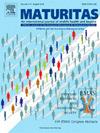阴道CO2激光治疗尿压力性失禁:一项随机对照试验
IF 3.6
2区 医学
Q2 GERIATRICS & GERONTOLOGY
引用次数: 0
摘要
目的激光治疗压力性尿失禁的疗效尚不明确。本研究的目的是确定阴道CO2激光治疗女性压力性尿失禁的有效性和安全性。研究设计:在丹麦Hvidovre大学医院进行的单点、患者盲法、安慰剂对照随机试验。37名有轻至重度压力性尿失禁症状的女性被纳入研究。他们被随机分为激光治疗组和假治疗组,每隔四周接受三次治疗。在第一次和最后一次访问时,妇女完成ICIQ-UI SF问卷,并进行标准化尿压力测试。两组均接受监督下的盆底肌肉训练,绝经后妇女推荐阴道雌激素治疗。主要结局指标:主要结局指标为国际尿失禁咨询问卷-尿失禁简表(ICIQ-UI SF)的治疗后评分。分数比较采用学生t检验和95%置信区间(CI)。次要结果是治疗后标准化压力测试的表现。结果两组间基线特征无差异。两组治疗后ICIQ-IU SF评分无差异:激光组平均得分为12.2,假手术组平均得分为12.7(平均差异95% CI: - 2.15至3.15;假定值0.70)。同样,我们发现各组在治疗后标准化压力测试中的表现没有差异(95% CI: - 4.33 g至40.73 g;假定值0.11)。发生了一个不良事件,膀胱感染,需要住院治疗。结论CO2阴道激光治疗对应激性尿失禁症状无明显改善作用。临床试验网站(clinicaltrials .gov) (NCT04136652)承认,研究人群很小。本文章由计算机程序翻译,如有差异,请以英文原文为准。
Vaginal CO2 laser treatment for urinary stress incontinence: A randomized controlled trial
Objectives
The effect of laser treatment for stress urinary incontinence is inconclusive. The aim of this study was to determine the efficacy and safety of vaginal CO2 laser in women with stress urinary incontinence.
Study design
Single-site, patient-blinded, placebo-controlled randomized trial at Hvidovre University Hospital, Denmark. Thirty-seven women with mild to severe symptoms of stress urinary incontinence were included. They were randomized to either laser or sham treatment and received three treatments, four weeks apart. At first and last visit, the women completed the ICIQ-UI SF questionnaire and had a standardized urinary stress test. Both groups received supervised pelvic floor muscle training, and postmenopausal women were recommended vaginal estrogen treatment.
Main outcome measures
The primary outcome was post-treatment score on the International Consultation on Incontinence Questionnaire-Urinary Incontinence Short Form (ICIQ-UI SF). Scores were compared using Student's t-test and 95 % confidence intervals (CI). The secondary outcome was performance on the post-treatment standardized stress test.
Results
Baseline characteristics did not differ between the groups. There was no difference in ICIQ-IU SF scores post-treatment between the two groups: mean score for the laser group 12.2 vs. 12.7 for sham (mean difference 95 % CI: −2.15 to 3.15; p-value 0.70). Likewise, we found no difference between the groups in performance on the post-treatment standardized stress test (95 % CI: −4.33 g to 40.73 g; p-value 0.11). One adverse event occurred, a bladder infection that required hospital admission.
Conclusions
In this study, CO2 vaginal laser did not improve the symptoms of stress urinary incontinence. It is acknowledged that the study population was small.
ClinicalTrials.gov (NCT04136652).
求助全文
通过发布文献求助,成功后即可免费获取论文全文。
去求助
来源期刊

Maturitas
医学-妇产科学
CiteScore
9.10
自引率
2.00%
发文量
142
审稿时长
40 days
期刊介绍:
Maturitas is an international multidisciplinary peer reviewed scientific journal of midlife health and beyond publishing original research, reviews, consensus statements and guidelines, and mini-reviews. The journal provides a forum for all aspects of postreproductive health in both genders ranging from basic science to health and social care.
Topic areas include:• Aging• Alternative and Complementary medicines• Arthritis and Bone Health• Cancer• Cardiovascular Health• Cognitive and Physical Functioning• Epidemiology, health and social care• Gynecology/ Reproductive Endocrinology• Nutrition/ Obesity Diabetes/ Metabolic Syndrome• Menopause, Ovarian Aging• Mental Health• Pharmacology• Sexuality• Quality of Life
 求助内容:
求助内容: 应助结果提醒方式:
应助结果提醒方式:


